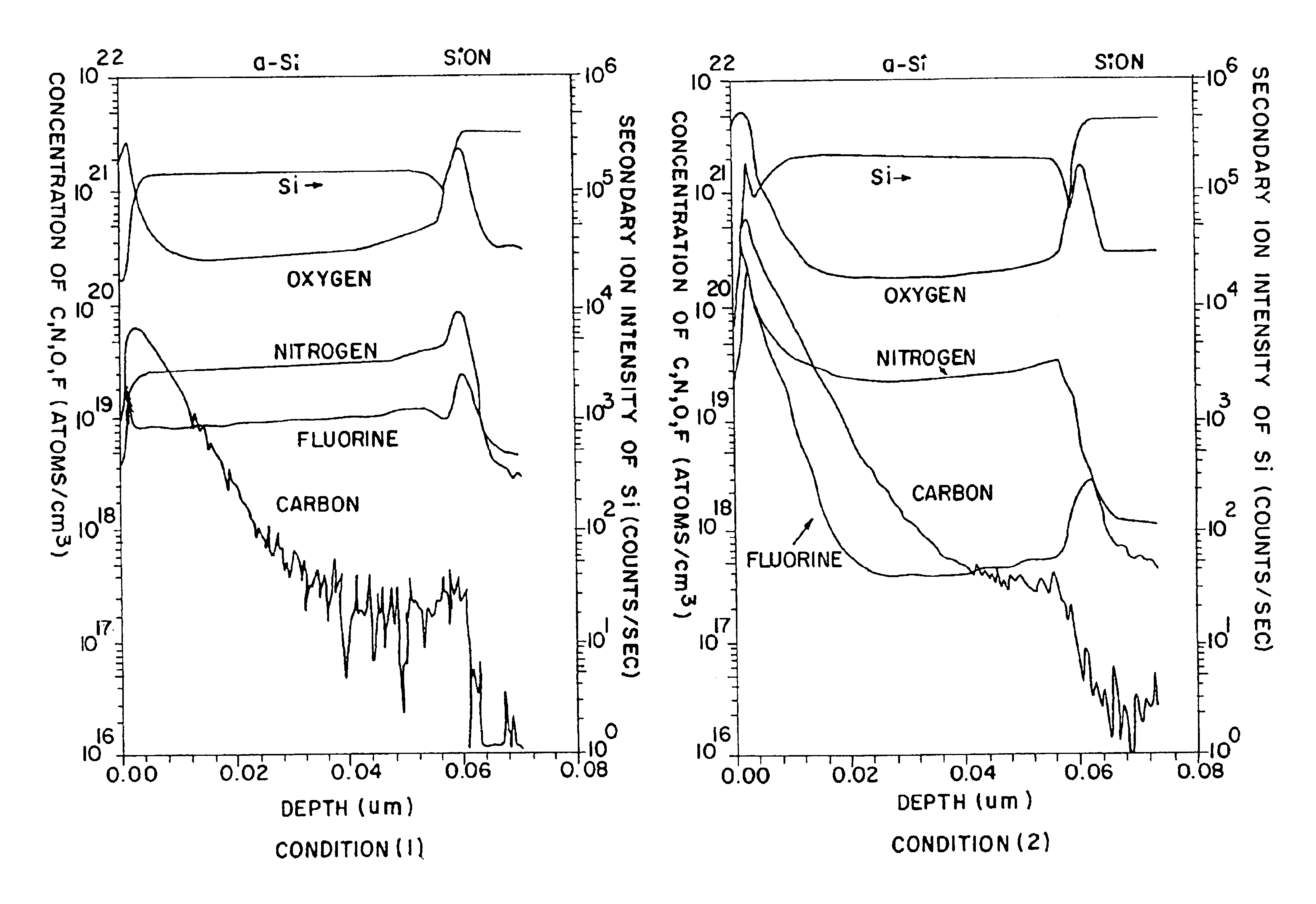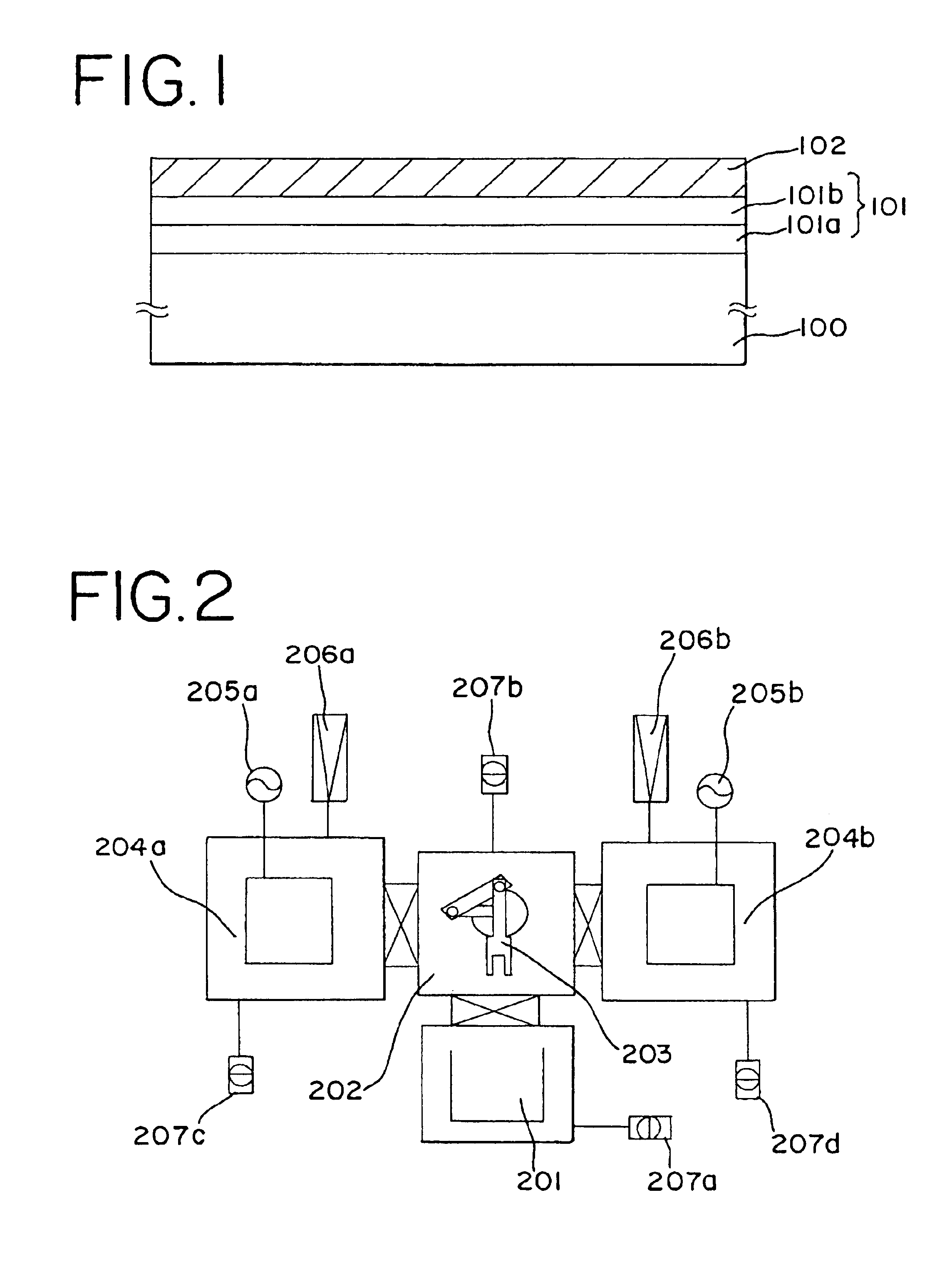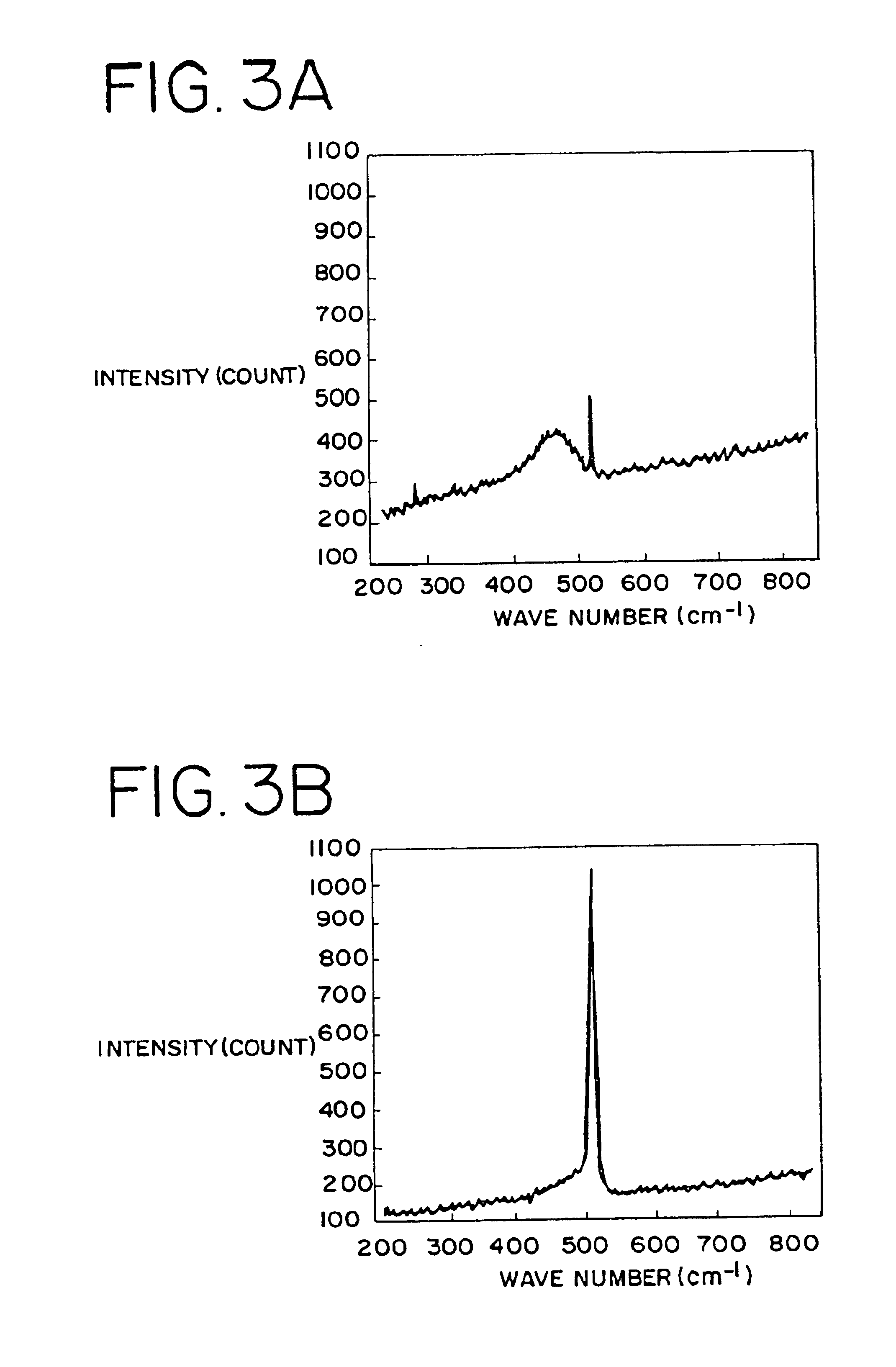Method of manufacturing a semiconductor device with fluorine concentration
a technology of semiconductor devices and concentration, applied in semiconductor devices, electrical equipment, transistors, etc., can solve the problems of reduced yield, increased process time, and low-priced glass used for a substrate, so as to reduce the process time, and reduce the amount of fluorine taken into the film
- Summary
- Abstract
- Description
- Claims
- Application Information
AI Technical Summary
Benefits of technology
Problems solved by technology
Method used
Image
Examples
embodiment 1
Embodiments of the present invention are described with reference to FIGS. 5A to 10. Here, a method of simultaneously manufacturing a pixel portion and TFTs (n-channel TFT and p-channel TFT) for forming a driver circuit provided in the vicinity of the pixel portion on the same substrate is explained in detail.
A glass substrate, a quartz substrate, a ceramic substrate and the like may be used for a substrate 500. Also, a silicon substrate, a metal substrate or a stainless substrate, formed with an insulating film on the surface, may be used. Further, a plastic substrate having heat resistance to a process temperature useable in this embodiment may also be used.
Next, as shown in FIG. 5A, a base film 501 formed of an insulating film such as a silicon oxide film, a silicon nitride film or a silicon oxide nitride film is formed on the substrate 500, and an amorphous semiconductor film 502 is sequentially formed on the base film 501. In this embodiment, a two layer structure is adopted fo...
embodiment 2
In this embodiment, a process of manufacturing an active matrix liquid crystal display device from the active matrix substrate manufactured in Embodiment 1 is described below. FIG. 11 is used for the explanation.
First, in accordance with Embodiment 1, after the active matrix substrate in the state of FIG. 8B is manufactured, an orientation film 601 is formed on the active matrix substrate of FIG. 8B, and a rubbing process is performed. Note that, in this embodiment, a columnar spacer 606 for maintaining an interval between substrates is formed at a desired position by patterning an organic resin film such as an acrylic resin film before the formation of the orientation film 601. Further, spherical spacers may be scattered onto the entire surface of the substrate instead of the columnar spacer.
Next, colored layers 604, 605 and a levelling film 607 are formed on an opposing substrate 603. The red-colored layer 604 and the blue-colored layer 605 are partially overlapped with each other...
embodiment 3
In this embodiment, a method of simultaneously manufacturing a pixel portion and TFTs (n-channel TFT and p-channel TFT) for forming a driver circuit in the vicinity of the pixel portion is explained with reference to FIGS. 12A to 14C.
First, as shown in FIG. 12A, on a substrate 1201 made of glass such as barium borosilicate glass or alumino borosilicate glass, typified by #7059 glass or #1737 glass of Corning Inc., preferably, gate electrodes 1202 to 1204, source wirings 1206, 1207 and a capacitor wiring 1205 for forming a storage capacitor of the pixel portion are formed from a conductive film containing one or a plurality of elements selected from the group consisting of molybdenum (Mo), tungsten (W) and tantalum (Ta). For example, an alloy of Mo and W is suitable from the viewpoint of low resistance and heat resistance. Further, the surface of the substrate may be oxidized using aluminum to form the gate electrode.
The gate electrode manufactured by a first photomask is formed with...
PUM
 Login to View More
Login to View More Abstract
Description
Claims
Application Information
 Login to View More
Login to View More - R&D
- Intellectual Property
- Life Sciences
- Materials
- Tech Scout
- Unparalleled Data Quality
- Higher Quality Content
- 60% Fewer Hallucinations
Browse by: Latest US Patents, China's latest patents, Technical Efficacy Thesaurus, Application Domain, Technology Topic, Popular Technical Reports.
© 2025 PatSnap. All rights reserved.Legal|Privacy policy|Modern Slavery Act Transparency Statement|Sitemap|About US| Contact US: help@patsnap.com



